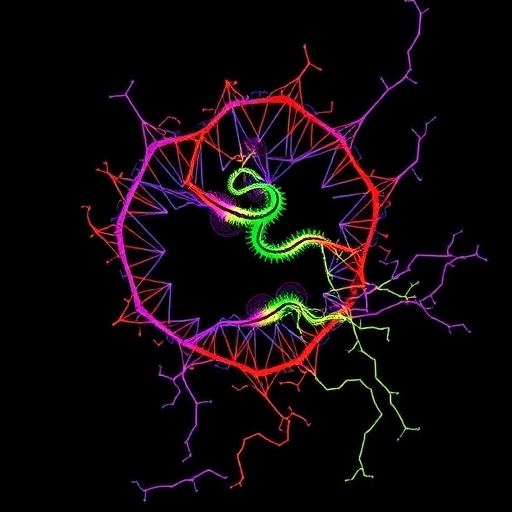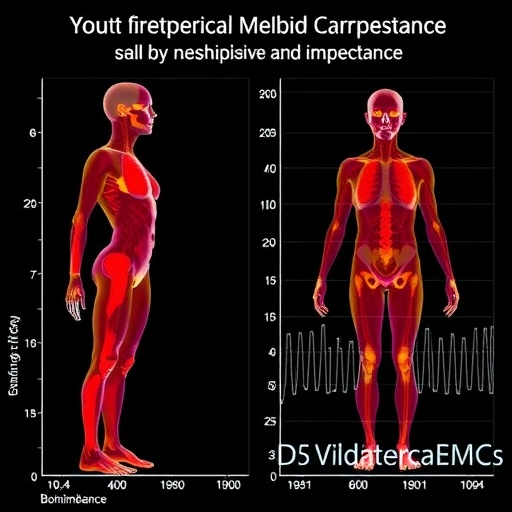Alopecia areata, a condition characterized by hair loss in patches, has become a focal point of medical research due to its complex pathophysiology and significant psychological impacts. A recent systematic analysis led by a team of researchers highlights a pressing issue: the global sex disparities in the lifetime risk of developing this condition. The study meticulously draws upon data from the Global Burden of Disease Study, spanning three decades (1990 to 2021), and reveals startling insights into how gender affects the prevalence and impact of alopecia areata across various demographics.
The researchers, led by Sun et al., embarked on this journey to quantify the lifetime risk of alopecia areata, an autoimmune disease where the body’s own immune system mistakenly targets hair follicles. The implications of their findings have rippling effects across both clinical practice and research fields. By encapsulating data from hundreds of thousands of cases worldwide, the study brings much-needed attention to a condition that affects millions but is often overshadowed by more well-known dermatological issues.
One of the most striking revelations from the analysis is the stark contrast in the lifetime risk of alopecia areata between males and females. The data shows that women face a significantly higher risk of experiencing alopecia areata at least once in their lives when compared to their male counterparts. Such disparities pose critical questions about underlying biological factors, including hormonal influences, genetic predispositions, and environmental triggers that may contribute to the higher vulnerability of women to this condition.
Moreover, when examining the age of onset, researchers found that women commonly develop alopecia areata at an earlier age than men. This early onset can exacerbate the psychological ramifications of the disease, including anxiety and depression, particularly as these issues can be intensified during formative years or pivotal moments in life. The study’s comprehensive age stratification allows for a nuanced understanding of the psychosocial consequences associated with alopecia areata, highlighting the importance of considering sex and age when addressing treatment and patient support.
In addition to demographic disparities, the report discusses geographical variances in the prevalence of alopecia areata. For instance, the analysis includes data from various regions, revealing that areas with higher levels of environmental stressors or differing healthcare access report different rates of alopecia areata. This insight underscores the necessity for targeted public health strategies that cater specifically to the needs of populations most affected by this condition, particularly in regions where research on alopecia is either lacking or underfunded.
The findings also suggest that public awareness campaigns about alopecia areata will be crucial moving forward. Many individuals suffering from this condition experience feelings of isolation or shame; thus, education and support from both healthcare providers and the broader community can help mitigate these feelings. The study advocates for increased visibility of alopecia areata in media and public discussions, promoting a culture of understanding that can ultimately lead to better care for those affected.
The implications of the study are particularly relevant for healthcare practitioners who are in a position to provide care for those affected by alopecia areata. Implementing screenings and creating tailored treatment plans could benefit patients significantly, as they will be more equipped to collaborate with their healthcare providers in managing their condition based on their unique risk factors. Furthermore, researchers suggest that healthcare systems should prioritize training for providers on the psychological aspects of alopecia areata, ensuring that they recognize the impact of the condition beyond the physical symptoms.
While the biological mechanisms behind alopecia areata remain a complex puzzle, the study weaves together existing research to highlight potential areas for further exploration. Future studies may want to delve deeper into immunological triggers and genetic profiles that predispose individuals to this condition, especially for women. Understanding these underlying factors could open doors to novel therapies, perhaps even preventative measures, that could alleviate the burden of alopecia areata on affected individuals.
Another critical dimension examined in the analysis revolves around the mental health implications of alopecia areata. Women, in particular, may confront unique challenges related to societal beauty standards, leading to increased anxiety and diminished self-esteem. This understanding advocates for the integration of mental health support into treatment regimens for patients dealing with alopecia areata. Bringing attention to the psychological aspects of this disease is fundamental as it paves the way for a more comprehensive approach to patient care.
In the realm of future research, the study emphasizes the need for diverse and inclusive studies that capture a broader spectrum of experiences with alopecia areata. As the global population becomes increasingly diverse, it is vital that research addresses the variations in how different genetic backgrounds may influence susceptibility and response to treatment. Such inclusivity not only strengthens the field but also fosters trust and support from all communities.
As the researchers conclude their findings, they underline the importance of ongoing dialogue around alopecia areata, encouraging stakeholders, including medical professionals, advocacy groups, and policymakers, to collaborate on initiatives that address the root causes and consequences of the condition. By acknowledging and addressing gender disparities, the medical community can work toward equitable healthcare solutions that uplift all affected individuals, irrespective of their gender or background.
In summary, the study by Sun et al. not only enhances our understanding of alopecia areata but also prompts a reevaluation of how society perceives and addresses autoimmune diseases. As the conversation evolves, it is crucial that those affected by alopecia areata feel seen, heard, and supported, paving the way for a future where comprehensive care for this condition is the norm, rather than the exception.
Subject of Research: Analysis of global sex disparities in lifetime risk of alopecia areata.
Article Title: Global sex disparities in lifetime risk of alopecia areata: a systematic analysis from the global burden of disease study, 1990 to 2021.
Article References:
Sun, J., Li, Y., Ye, Z. et al. Global sex disparities in lifetime risk of alopecia areata: a systematic analysis from the global burden of disease study, 1990 to 2021. Biol Sex Differ 16, 68 (2025). https://doi.org/10.1186/s13293-025-00749-w
Image Credits: AI Generated
DOI: 10.1186/s13293-025-00749-w
Keywords: Alopecia areata, gender disparities, lifetime risk, autoimmune disease, mental health, public awareness.
Tags: autoimmune hair loss conditionsclinical implications of hair lossdemographic prevalence of alopecia areataGlobal Burden of Disease Study findingsglobal gender differences in alopecia areatahair follicle immune responselifetime risk of alopecia areatapathophysiology of alopecia areatapsychological impacts of hair lossresearch on alopecia areatasex disparities in alopecia areatawomen’s health and hair loss





